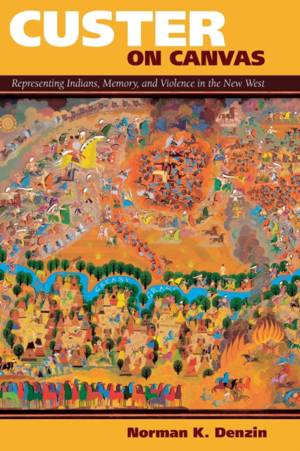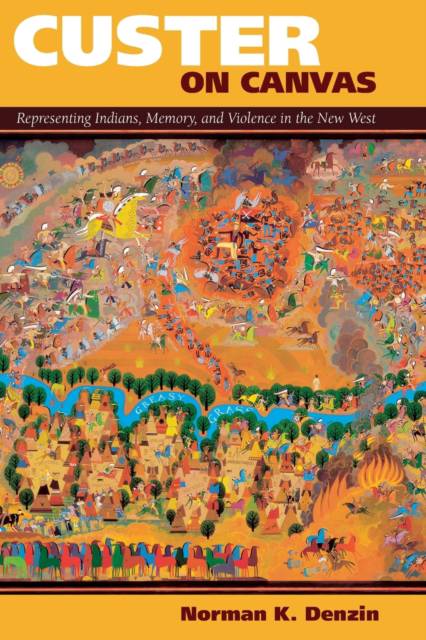
- Afhalen na 1 uur in een winkel met voorraad
- Gratis thuislevering in België vanaf € 30
- Ruim aanbod met 7 miljoen producten
- Afhalen na 1 uur in een winkel met voorraad
- Gratis thuislevering in België vanaf € 30
- Ruim aanbod met 7 miljoen producten
Zoeken
Custer on Canvas
Representing Indians, Memory, and Violence in the New West
Norman K Denzin
Paperback | Engels
€ 83,95
+ 167 punten
Uitvoering
Omschrijving
The 1876 events known as Custer's Last Stand, Battle of Little Big Horn, or Battle of Greasy Grass have been represented over 1000 times in various artistic media, from paintings to sculpture to fast food giveaways. Norman Denzin shows how these representations demonstrate the changing perceptions--often racist--of Native America by the majority culture, juxtaposed against very different readings shown in works composed by Native American artists. Consisting of autobiographical reminiscences, historical description, artistic representations, staged readings, and snippets of documents, this multilayered performance ethnography examines questions of memory, race, and violence against Native America, as symbolized by the changing interpretations of General Custer and his final battle.
Specificaties
Betrokkenen
- Auteur(s):
- Uitgeverij:
Inhoud
- Aantal bladzijden:
- 296
- Taal:
- Engels
Eigenschappen
- Productcode (EAN):
- 9781598745993
- Verschijningsdatum:
- 30/04/2011
- Uitvoering:
- Paperback
- Formaat:
- Trade paperback (VS)
- Afmetingen:
- 152 mm x 226 mm
- Gewicht:
- 476 g

Alleen bij Standaard Boekhandel
+ 167 punten op je klantenkaart van Standaard Boekhandel
Beoordelingen
We publiceren alleen reviews die voldoen aan de voorwaarden voor reviews. Bekijk onze voorwaarden voor reviews.











